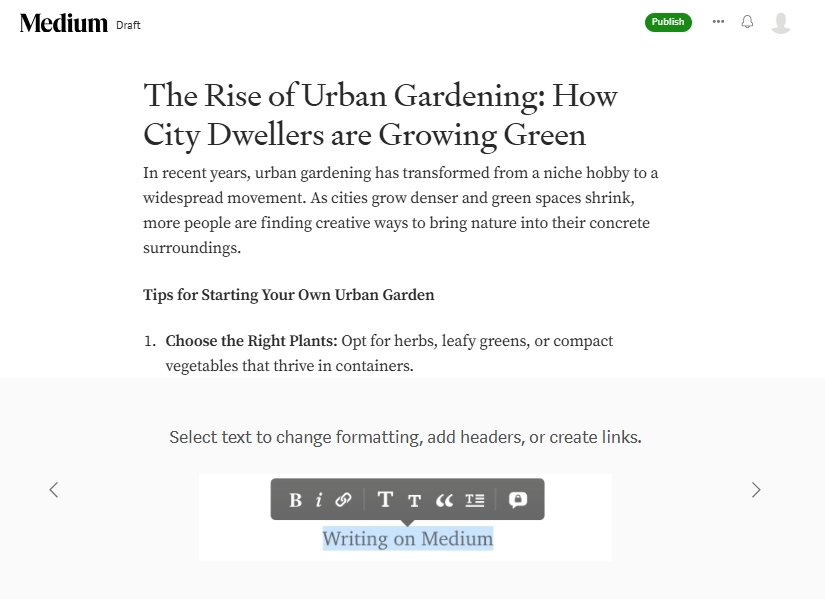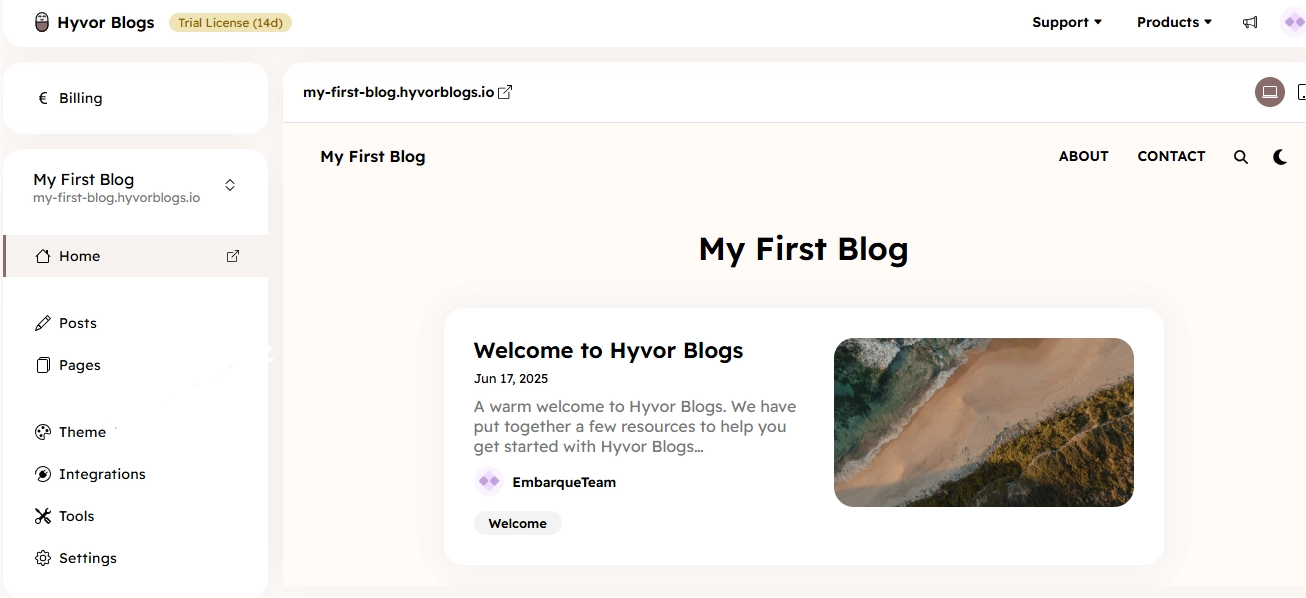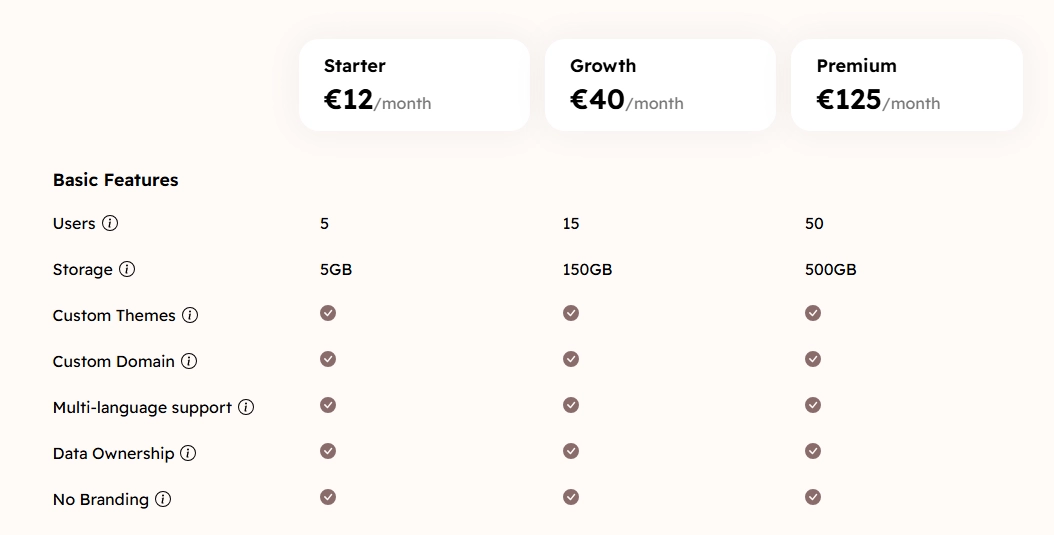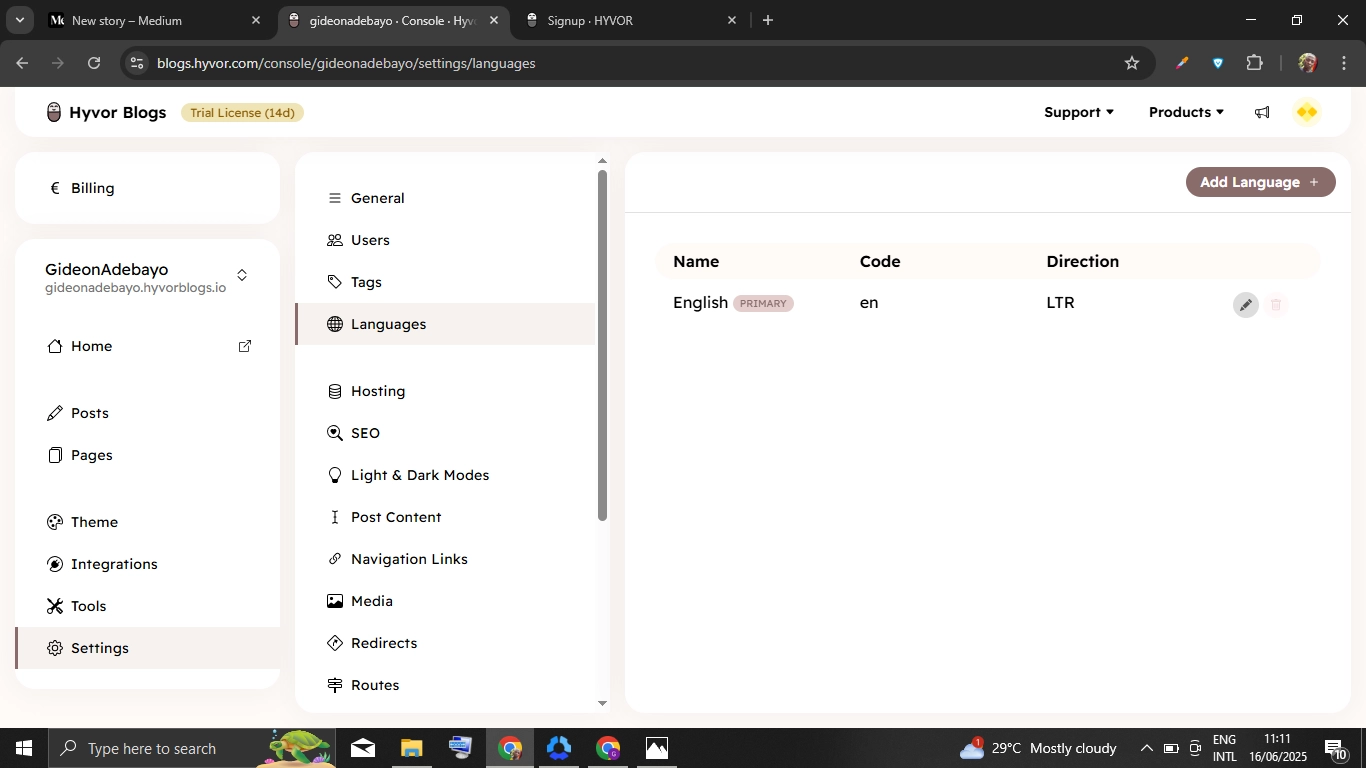This article gives you a complete Medium review and how Medium performs as a content management system (CMS), highlighting its strengths and where it falls short, especially in areas like control, customization, and scalability. In the end, we introduce a powerful Medium alternative that offers greater flexibility, ownership, and long-term growth potential.
Is Medium CMS still a viable CMS for serious publishers?
If you're a content team, solo blogger, or niche media startup looking for a clean, low-maintenance way to publish content, Medium probably crossed your mind. It's sleek, distraction-free, and already has an audience, but if you've ever tried building a long-term content strategy on it, you've likely hit a few walls.
From limited SEO controls to inflexible design, Medium often feels more like a social platform than a true content management system (CMS).
In this article, we’ll explore whether Medium CMS remains a good CMS for bloggers today. We’ll cover its strengths, limitations, and how it compares to an alternative with more flexibility and control.
But first…
Why listen to us
At Hyvor Blogs, we specialize in helping individuals and businesses create beautifully designed blogs that are both functional and engaging. Since launching in 2020, our tools, Hyvor Blogs and Hyvor Talk, have powered countless blogs and sparked millions of conversations around the world. With this experience, we understand what makes a great blogging platform.

What is Medium?

Medium is a popular online publishing platform launched in 2012 by Twitter co-founder Evan Williams. It offers a simple, clean space where writers, from casual bloggers to professional publishers, can share their stories, ideas, and articles. Medium’s appeal lies in its ease of use and built-in audience, making it quick to publish without worrying about technical setup.
Over the years, Medium has attracted a wide range of users thanks to its focus on quality content and community engagement. It combines blogging with social networking features, allowing readers to follow writers, highlight passages, and leave comments.
But as publishing needs have grown more complex, many bloggers now wonder if Medium still meets the demands of serious content creators in 2025.
Wondering how Medium compares with WordPress? Check out our review here.
Key features of Medium as a CMS
Editor interface: Offer a distraction-free, WYSIWYG writing environment with support for basic formatting, media embeds, and code snippets.
Content distribution: Publish directly to Medium’s network and gain visibility through internal recommendations, topic tags, and curation by editors.
Publications: Organize content under branded "publications" that group posts by multiple authors and apply shared visual styles and metadata.
Member-only stories: Restrict access to selected posts behind a paywall, allowing participation in Medium’s Partner Program for monetization.
Import tool: Transfer existing content from external blogs or websites with canonical tag support to maintain SEO attribution.
Basic analytics: Track views, reads, and reading time per story using Medium’s built-in metrics dashboard.

Commenting and interaction: Enable readers to highlight text, respond inline, and leave comments directly beneath posts for engagement.
Tagging system: Add up to five tags per post to improve topic discoverability within Medium’s ecosystem.
Newsletter integration: Send published stories directly to email subscribers via Medium’s native newsletter feature.
Basic SEO controls: Medium automatically generates SEO-friendly elements like meta titles, descriptions, and canonical tags.
Pricing

Free: Anyone can create a Medium account and publish articles for free.
Medium Member ($5/month or $60/year): Lets you create publications, connect a custom domain, and earn money from your writing through the Partner Program.
Friend of Medium ($15/month or $150/year): Includes all Member benefits, plus expanded sharing options to help boost writer earnings and visibility.
Medium does not offer a free trial as membership begins immediately upon signup.
Pros of Medium CMS
Intuitive writing experience: Medium’s interface is clean and streamlined. It enables users to focus on content without technical distractions.
Built-in audience & curation: Large, active readership and editorial promotion help new writers gain exposure quickly.
Easy content discovery and community engagement: Medium’s built-in community, personalized recommendations, and interactive features (like highlights and comments) help readers discover and engage with relevant content easily.
Seamless monetization via Partner Program: Easy-to-join revenue model rewards reader engagement without setup hassle.
Automated SEO and formatting: Platform handles structure and metadata behind the scenes. This takes the burden of discoverability off their members.
Cons of Medium CMS
Limited customization & branding: No custom domains or design control, which constrains brand identity and flexibility.
Restricted audience ownership: Lack of personalization tools and external links makes it hard to build a direct subscriber base.
Limited control over reader journey: Medium promotes other writers' posts and limits custom navigation, making it hard to retain readers or guide them through your own content.
Variable content quality: Open publishing leads to inconsistent quality; signal-to-noise ratio depends heavily on curation and personal filters.
Platform dependency risks: Content stays on Medium’s infrastructure, leaving creators vulnerable to policy shifts and access restrictions.
Introducing Hyvor Blogs: a more customizable and SEO-friendly Alternative to Medium
Hyvor Blogs is a privacy-focused content platform built for creators who want control over their content, audience, and branding. Unlike Medium, it allows full ownership with features like custom domains, flexible design, and multilingual support.

While Medium limits access to audience data and monetization tools, Hyvor Blogs offers native newsletters, gated content, and membership plans. This enables creators to build and engage their own communities directly.
It also supports advanced SEO configurations, team collaboration, and developer integrations, making it suitable for individuals and businesses alike. Hyvor Blogs is designed to scale without compromising on privacy or independence.
Key features of Hyvor Blogs
Rich Text Editor: Enable creators to write and format content using a simple, distraction-free interface that supports media embeds, code snippets, and syntax highlighting.
Multilingual Support: Automatically translate blog posts into up to 25 languages using AI, helping creators reach a global audience without external tools.
Custom Domains & Subdirectories: Allow users to publish content under their own domains or subfolders, ensuring better control over branding and SEO.
Built-in SEO Tools: Manage metadata, canonical URLs, sitemaps, and redirects automatically, with manual overrides available for advanced users.
GPT (AI) for content creation: Chat with GPT to generate content, blog post outlines, and more. GPT is integrated directly into the editor, making it easy to use generated content in your posts.
Broken link analyzer: Hyvor Blogs’s link analyzer checks for broken links in your posts as you write. It also runs a bi-weekly check on all your posts and notifies you via email if any links are broken.
Customizable Themes: Provide pre-designed themes and support full theme editing using custom code for precise visual control.
Memberships & Newsletters: Let users create gated content and subscription plans, and distribute newsletters without third-party tools.
Built commenting system - Comes with Hyvor Talk, a fully integrated commenting system, completely free. No plugins, no extra setup, and no hidden fees. It lets your readers engage, react, and share thoughts directly on your posts.
Team Collaboration: Assign roles like writer, editor, and admin to multiple team members, enabling streamlined content workflows.
Developer Integrations: Support custom code insertion, webhooks, and APIs to integrate external services or automate tasks.
Spam Protection: Detects and blocks spam using FortGuard, protecting blogs and comments from malicious activity.
Privacy Compliance: Store no personal user data unnecessarily and comply with GDPR/CCPA standards by default.
Pricing

Starter - €12/month: Supports 5 users and 5GB storage, providing all the features needed to launch a fully functional blog.
Growth - €40/month: Includes 15 users, 150GB storage, plus advanced SEO tools and link analysis to boost your blog’s performance.
Premium - €125/month: Offers 50 users, 500GB storage, and full access to all features for maximum flexibility and scale.
A 7-day free trial is available, allowing full feature access without a credit card. This gives users a chance to explore our platform before committing.
Medium CMS vs Hyvor Blogs (compared side-by-side)
Feature | Medium CMS | Hyvor Blogs |
Custom Domain Support | ⭕ Limited (Publications only) | ✅ Full support (all plans) |
Design Customization | ⭕ Minimal control | ✅ Fully customizable themes |
Content Ownership | ❌ Hosted on Medium platform | ✅ Full control, self-hosting possible |
SEO Tools | ⭕ Basic auto-SEO only | ✅ Advanced SEO config + broken link checker |
Multilingual Support | ❌ Not supported | ✅ Built-in AI-powered translations |
Monetization Options | ✅ Partner Program | ✅ Membership tiers + paid content |
Audience Data Access | ❌ Restricted | ✅ Full access and control |
Privacy & Compliance | ⭕ Basic compliance | ✅ GDPR/CCPA compliant by default |
Commenting System | ✅ Built-in | ✅ Integrated (Hyvor Talk, free) |
Team Collaboration | ⭕ Basic (publications only) | ✅ Roles + access control |
Why choose Hyvor Blogs over Medium for content publishing?
1. Full ownership and control
Unlike Medium, which keeps your content under its own domain and structure, Hyvor Blogs gives you full control.
Use custom domains
Access your entire blog structure
Insert custom code, redirects, and advanced SEO settings
This independence is vital for brand-building, search engine strategy, and long-term content portability.
2. Customization and branding
Medium limits design flexibility with its uniform layout.
Hyvor Blogs, however, gives creators complete visual freedom:
Choose from themes or fully customize with HTML/CSS
Support for subdirectory hosting
Build custom navigation and embeddable elements
This lets you create a fully branded experience, not just adapt to someone else’s.
3. Multilingual publishing
Medium doesn’t support multilingual content.
Hyvor Blogs supports 25+ languages, powered by AI-driven translation for every post.
No third-party plugins needed
Fully SEO-optimized per language
Easily manage global content from a single dashboard
Perfect for reaching international audiences with ease.

4. Built-in privacy and compliance
Hyvor Blogs is privacy-first by default:
No ad tracking
Full GDPR/CCPA compliance
No personal data reselling
Medium offers basic security but lacks the transparency and controls required by privacy-conscious publishers. Hyvor Blogs goes further with features like FortGuard for spam and threat protection with Hyvor Talk.
5. Memberships and newsletter tools
While Medium locks monetization behind its Partner Program, Hyvor Blogs puts creators in charge:
Gated content
Membership tiers
Integrated newsletters
Full access to subscriber data
You define pricing, access, and communication, no middlemen, no limitations.
6. Developer-friendly integrations and extensibility
Hyvor Blogs stands out with robust developer tools and integration options, which are not available on Medium. With Hyvor Blogs, you can:
Insert custom code (HTML, CSS, JavaScript) into your blog for advanced functionality.
Use APIs and webhooks to automate workflows or connect with external services.
Access a powerful blog console for managing technical aspects without platform restrictions.
This flexibility enables technical users and businesses to tailor their blogs for unique needs, integrate with other platforms, and future-proof their content infrastructure.
7. Enhanced Team Collaboration and Workflow Management
Unlike Medium, which offers only basic collaboration features limited to publications, Hyvor Blogs provides comprehensive team management tools. You can:
Assign specific roles such as writer, editor, and admin with granular access controls.
Streamline editorial workflows with clear permissions and task assignments.
Collaborate efficiently within the platform without relying on external tools.
This makes Hyvor Blogs ideal for content teams and agencies looking to maintain organized, secure, and scalable publishing processes.
Take control of your blogging experience with Hyvor Blogs
Medium offers a smooth publishing experience for writers who value simplicity and reach. However, its limitations in customization, SEO, and content ownership make it less suitable for creators who want long-term control. That’s where Hyvor Blogs comes in.
Hyvor Blogs is a privacy-first CMS built for flexibility, growth, and full content ownership. With features like multilingual support, native newsletters, custom domains, and advanced SEO tools, it’s designed to support creators and teams who want more than just a publishing tool.
Ready to take full control of your content? Start your free 14-day trial with Hyvor Blogs today.

Comments